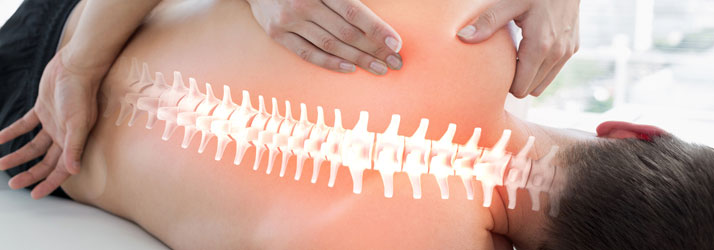What Is Degenerative Scoliosis in Vacaville

Degenerative scoliosis in Vacaville is a side-to-side curvature of the spine that is caused by a degeneration of the intervertebral discs and facet joints, which are known to be moving parts of the spine. This degeneration can happen slowly as a person gets older. This is a different cause of scoliosis compared to the standard adolescent-onset scoliosis.
The pain when degenerative scoliosis becomes symptomatic can range from a dull ache to agonizing sensations that shoot down the leg, which can make walking difficult or even impossible.
How degenerative scoliosis starts in Vacaville
Facet joints help the spine bend smoothly while the intervertebral discs act as cushions to absorb the shock between vertebral bones. Aging can cause the degeneration of these joints and discs but for some people, these degenerative processes happen faster and/or can cause more symptoms.
If degeneration is more pronounced on one side of the spine, it can develop into degenerative scoliosis. The degenerative scoliosis curve can be easily identified with its slightly "C" shape since the spine abnormally curves on one side or the other. If the spinal curve bends at least 10 degrees sideways, it is already considered scoliosis.
Pain from degenerative scoliosis
Degenerative scoliosis has painful symptoms that are similar to lumbar osteoarthritis and/or lumbar degenerative disc disease since they are part of the very same degenerative process. Degenerative scoliosis can trigger these discomforts:
- Sharp leg pain when walking but disappears with rest.
- Stiffness or a dull ache in the mid to low back.
- Shock-like back pain that travels down the buttock and into the leg.
- Numbness and/or pins-and-needles tingling that travels down the buttock and into the leg.
You should keep in mind that nerve impingement or spinal joint inflammation is the main cause of degenerative scoliosis pain and not the abnormal sideways curvature of the spine.
The course of degenerative scoliosis
There's no telling how many people are suffering from degenerative scoliosis since many cases have never caused any significant symptoms and go undetected. However, one study had estimated that at least 60% of the people over the age of 60 have mild degenerative scoliosis.
If degenerative scoliosis becomes symptomatic, then pain will slowly start showing. Early symptoms come in the form of a dull ache or stiffness in the mid to low back section that comes and goes. At this point, nonsurgical treatment options are usually sufficient.
In rare cases, scoliosis surgery is recommended particularly if the pain persists or is making a negative impact on the lifestyle of a person even when multiple treatments have already been administered. But since the majority of those with symptomatic degenerative scoliosis are aging 65 and older, surgery should be avoided due to age-related factors like having a weakened heart or fragile bones.
When degenerative scoliosis is serious
If degenerative scoliosis caused a compression of the spinal cord or nerve root, it could jeopardize a person's nerve function. This can be felt as a sharp or shock-like pain in the back that radiates down the buttock and/or into the leg, or as a numbness or tingling sensation that can radiate down into the leg. When this happens, it is referred to as a condition called sciatica or sciatic pain. The medical term for this radiating pain is known as radiculopathy. While unlikely, there's a possibility that degenerative scoliosis can cause permanent leg weakness or bladder/bowel control problems.
OFFICE HOURS
Monday
8:30am - 1:00pm
2:00pm - 7:00pm
Tuesday
9:00am - 1:00pm
2:00pm - 7:00pm
Wednesday
8:30am - 1:00pm
2:00pm - 7:00pm
Thursday
9:00am - 1:00pm
2:00pm - 7:00pm
Friday
Closed
Saturday
Closed
Sunday
Closed
Absolute Integrative Physical Medicine
1490 Alamo Drive Suite B
Vacaville, CA 95687



